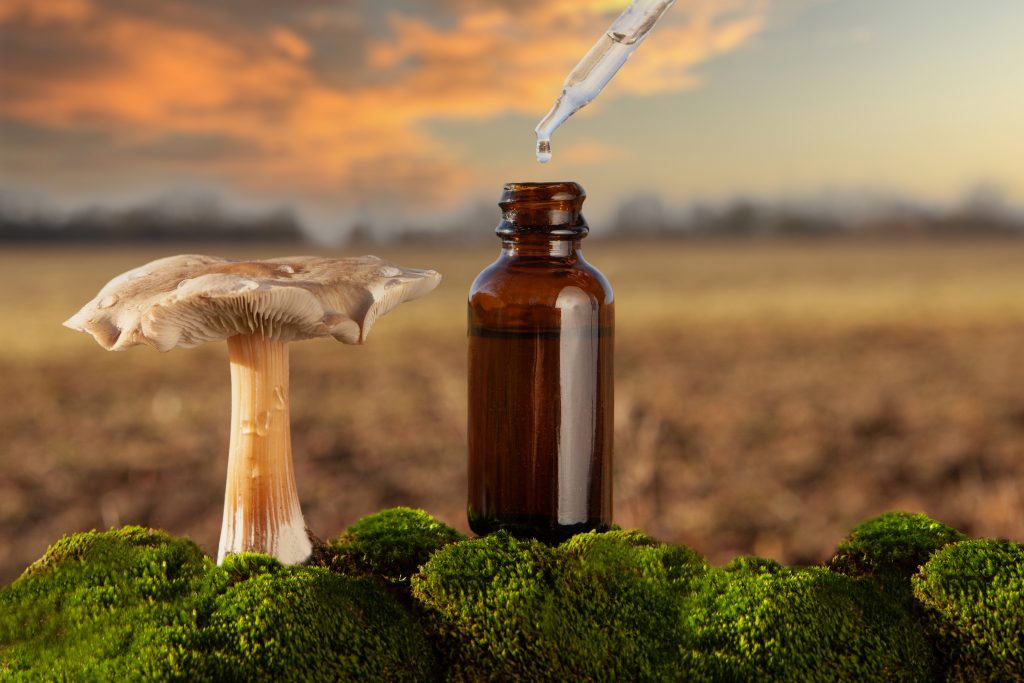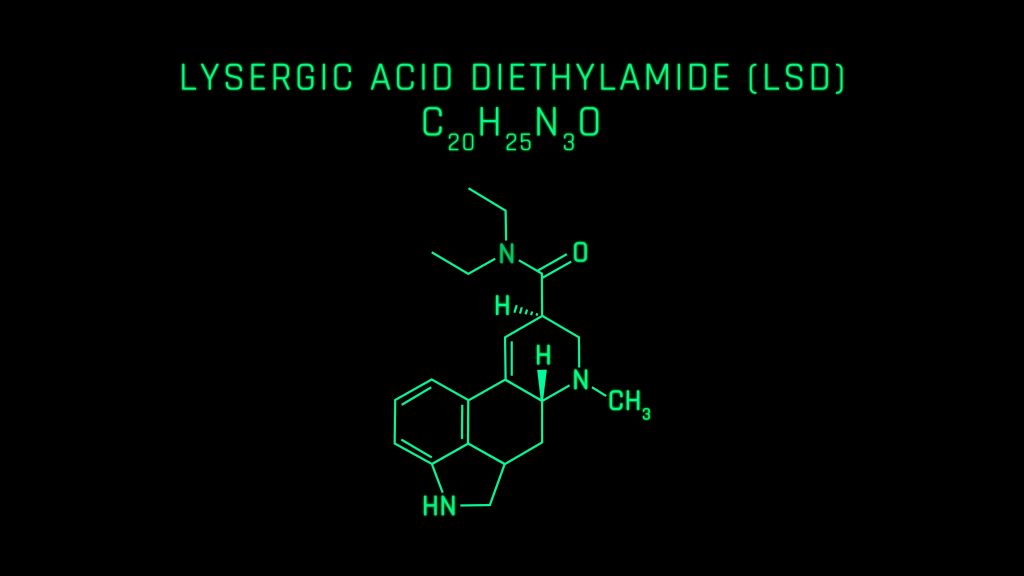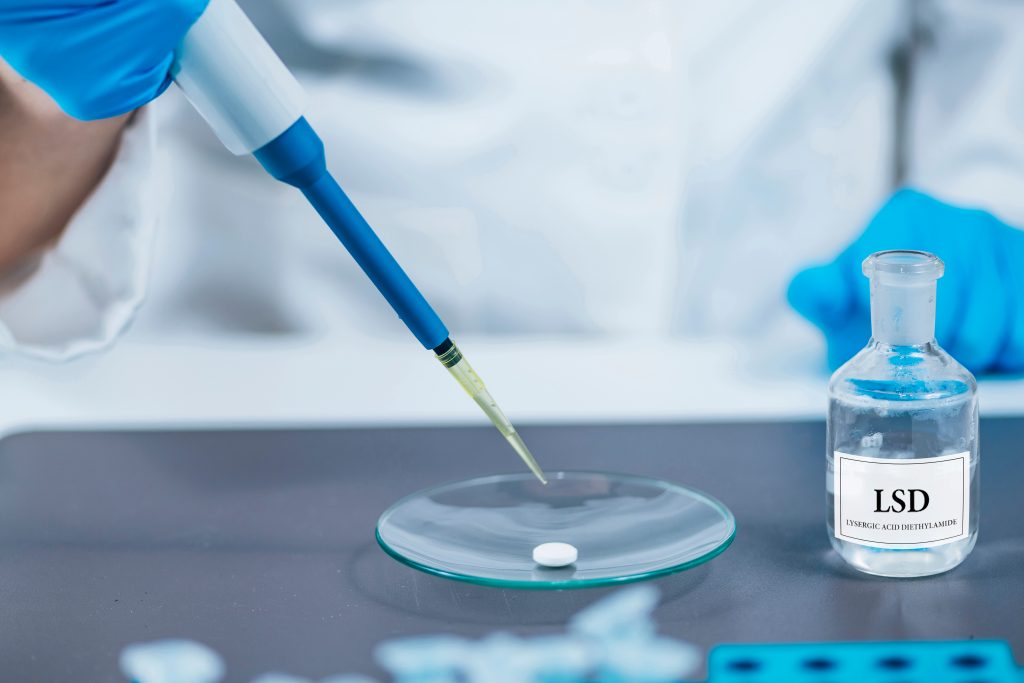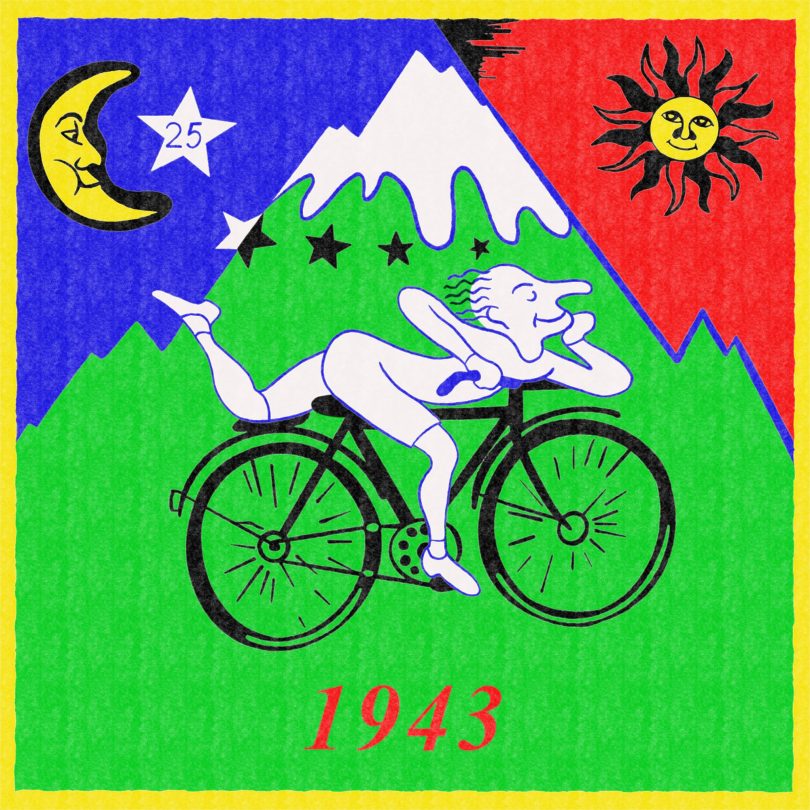The psychedelic boom is just beginning, with legalizations occurring, and new bills working their way through local governments to provide more psychedelic freedom. For those still unaware, psychedelics have been proving to be a valuable medicine in the fight against mental illness. When looking back in the history of medical psychedelics to where it started, it all comes down to one man, Albert Hofmann, and his discovery of LSD.
Albert Hofmann sure started something big when he discovered LSD, but it might be a while longer before LSD is legalized. If psychedelics continue like the cannabis industry, it should happen eventually. Luckily, for now we’ve got cannabis, and all its great medicinal and recreational compounds, like delta-9 THC, delta-8 THC, and a range of other minor cannabinoids like THCV, THCP, delta 10, HHC, THC-O and more. You can go ahead and check out our weekly deals.
What are psychedelics?
Psychedelics are drugs that contain chemical compounds that cause a psychoactive reaction in a user. Such reactions include experiencing hallucinations, which means hearing, seeing, feeling, tasting, and smelling things that aren’t there. Psychedelics are also associated with creating spiritual experiences and can promote feelings of connectedness between the user and others around. Users experience euphoria, relaxation, and well-being, while also experiencing mystical sensations. Psychedelics can alter mood, perception, and cognition, though different drugs can cause different effects, and the amount taken is important.
Psychedelics are a subset of hallucinogenic drugs, which themselves are a subset of psychoactive drugs. They can be found in nature, like magic mushrooms or peyote, or made in a lab like LSD or PCP. Though psychedelics have been found generally safe in testing, getting the dose correct is important. This is the same with any type of medication, and is not specific to psychedelics. A person who takes too much oxycontin might overdose and die, a person who takes too much LSD might have a bad trip.
‘Bad trips’ are characterized by negative, or even scary, hallucinations. Users can experience feelings of dysphoria, anxiety, and panic, as well as physical symptoms like dizziness, irregular heartbeat, numbness, vomiting, and sweating and chills. Bad trips have not been known to result in death, but can certainly be a negative experience for the user, and back up that careful dosing is very important.

Many psychedelics are serotonergic, meaning they interact with serotonin receptors in the brain. This will usually cause a rush of the neurotransmitter, followed by blocking reuptake to allow for more absorption. The neurotransmitter serotonin is responsible for many functions in the human body, from mood regulation and involuntary muscle control, to transmitting signals throughout the brain.
Historical use of psychedelics
Though we treat psychedelics like we don’t know much about them in mainstream life, there is plenty of evidence they’ve been used for thousands of years, although the context they were used in, may have been different from how they’re used today. Information that we do have was obtained from ancient texts, findings, and rituals.
For example, in the Sora River Valley of Southwestern Bolivia, a pouch was found containing traces of different psychedelic compounds including both harmine and dimethyltryptamine – used to make ayahuasca; bufotenine, a psychedelic compound found in toad skin; and psilocin, a psychedelic compound of magic mushrooms. The pouch is said to be from around 900-1100 CE according to mass spectrometry carbon dating. This is the earliest finding to show the use of the plants that combine to make ayahuasca.
Other research has pointed to use of psychedelics in Mesoamerica by the Mayans, Aztecs, Olmecs, and Zapotecs. The Mayans were known for drinking balché from Lonchocarpus bark extracts, which together with honey produces a psychoactive effect (the bark can itself, but is milder without the honey). It was used for group ceremonies to get intoxicated. The cultures mentioned used the peyote plant for mescaline, hallucinogenic mushrooms, and ololiuhqui seeds, which contain lysergic acid amide, a relative to LSD.
The near-East has also been a hotspot for ancient psychedelic findings. Several artifacts have been made in that region including residues, fibers, pollen, and carbonized seeds. In fact, traces of Blue Water Lily extract, a strong narcotic, were found in Tutonkamen’s tomb which dates back to the 14th century BC. In Lebanon, 10 liters of Viper’s Bugloss was found in a storage jar in Kami del-Loz temple from the late bronze age. Viper’s Bugloss is a very strong hallucinogenic compound.
What led up to Albert Hofmann finding LSD
History is all fine and good, but in today’s world we study things in labs. In modern times, the practice of studying psychedelics began in Switzerland with a chemist named Albert Hofmann. Born in 1906, in Baden, Switzerland, Hofmann finished his chemistry degree at the University of Zurich in 1929. Immediately after graduation, he began working for the chemical company Sandoz.

When Sandoz hired Hofmann, the company had only opened a pharmaceutical department a few years before in 1917, even though the company was founded in 1886. The pharmaceutical department started with the isolation of a compound called aotamine from a fungus called ergot, which can be found in tainted rye. Ergot has been used in natural medicine traditions for many, many years, since in small doses, it has been known to quicken child birth, as well as help with the bleeding after. However, when found in tainted rye, ergot can cause incredible illness. The scientist who isolated the compound, Arthur Stoll, wanted to isolate the part that caused the constriction that allowed for the medical advantages only.
He was able to do it, isolating the compounds ergotamine and ergobasine, which enabled the ability to dose very precisely, and without other compounds from ergot getting in the way. Within the next few years, researchers at the company were able to elucidate the chemical structures of different compounds of ergot thought useful, all of which share a common nucleus. This point at which all the compounds start, is named Lysergsaure (in German), or lysergic acid. These discoveries made a lot of money for Sandoz, and helped launch a pharmaceutical department for further research and development. This is the climate that Hofmann walked into when he was hired in 1929.
Albert Hofmann and the unexpected finding of LSD
When Albert Hofmann entered the picture, the Sandoz lab was busy studying ergot, and the compounds within. Hofmann was able to establish a synthetic process to build the ergot compounds using the chemicals that make them up. He was able to synthesize active components of ergot, along with similar compounds from other plants, that were thought to be possible for medical use. Hofmann did a lot of experimentation, combining lysergic acid with other compounds to see what kind of results occurred. He did this about 24 times before something big happened.
Hofmann had been trying to find a combination that could stimulate circulation and respiration. On the 25th occasion of combining lysergic acid with another compound, Hofmann used diethylamine, a derivative of ammonia. The compound it created, was called LSD-25 at the time, or lysergic acid diethylamide. Though it did not meet the needs specifically of what he was looking for, it was noted that the created compound caused excitability in animals during testing. At the time, LSD-25 was put on the backburner, but Hofmann couldn’t forget about it, saying it was “a peculiar presentiment—the feeling that this substance could possess properties other than those established in the first investigations.”
Five years later, he felt the urge to recreate this compound again, and this time, something very strange happened. He started feeling strange. It was a Friday, so he left the lab early and returned home. When he came back into the lab the following week, he wrote this to Stoll, who was his boss at the time:
“I was forced to interrupt my work in the laboratory in the middle of the afternoon and proceed home, being affected by a remarkable restlessness, combined with a slight dizziness. At home I lay down and sank into a not unpleasant intoxicated-like condition, characterized by an extremely stimulated imagination. In a dream-like state, with eyes closed (I found the daylight to be unpleasantly glaring), I perceived an uninterrupted steam of fantastic pictures, extraordinary shapes with intense, kaleidoscopic play of colors.”

What did he do next?
When Albert Hofmann first discovered the effects of LSD, he didn’t know what caused them. First, he thought he had been exposed to some kind of chloroform solvent, but when he intentionally breathed in fumes, he didn’t get the same response. It finally occurred to him that he might have actually ingested some of the LSD-25 he was working with, despite the fact that the only place he had made contact, was his fingertips. As it was understood ergot compounds could be toxic, a lot of measures were taken for safety. Upon realizing it might have been the LSD-25, Albert Hofmann did what any good scientist would do, he began experimenting on himself.
On April 19th, 1943, Hofmann dissolved 250 millionths of a gram of lysergic acid diethylamide tartrate (the crystalized version of LSD-25), and drank it down. He did this without giving a heads up to anyone at Sandoz except his lab assistant, and he didn’t expect anything to happen. He had taken such a small dose – with the intention of slowly increasing to find the right amount, that he hadn’t expected the response that he got. After about 40 minutes, he wrote this:
“Beginning dizziness, feeling of anxiety, visual distortions, symptoms of paralysis, desire to laugh.” Due to his condition, he had to have his lab assistant take him home, which due to wartime restrictions, meant riding on bikes. One can only imagine how funny that bike ride must have been! He later said this about the experience:
“Everything in my field of vision wavered and was distorted as if seen in a curved mirror. I also had the sensation of being unable to move from the spot. Nevertheless, my assistant later told me that we had traveled very rapidly. Finally, we arrived at home safe and sound, and I was just barely capable of asking my companion to summon our family doctor and request milk from the neighbors.”
Though the symptoms were frightening, as they were unexpected, a doctor’s visit confirmed that nothing was actually wrong with Hofmann. When he had calmed down, and could speak clearly about his experience, he said this: “Everything glistened and sparkled in a fresh light. The world was as if newly created. All my senses vibrated in a condition of highest sensitivity, which persisted for the entire day.”
Hofmann continued experimentation with himself and a couple close friends. He found the setting to be a very important factor in how the trip played out. Hofmann went on to introduce this new compound to psychiatrists in the mid-1900’s like Humphry Osmond and Ronald Sandison. Osmond conducted the Saskatchewan trials in Canada. In the studies, alcoholics were given LSD to quit drinking, and according to the studies, an entire 40-45% were able to do so for at least a year after only one dose. Sandison operated out of the UK, doing his own experimentation with acid. One of his experiments included using 36 psychoneurotic patients, all of whom were cured or showed improvement after using LSD, save for two. Both doctor’s developed their own strategies for the emerging psychedelic-assisted therapy, all based on Hofmann’s experiences.

Conclusion
The story of acid is obviously much longer than this, but this is how it started, with Albert Hofmann and his self-experimentation of LSD. Though LSD is currently Schedule I in the US, both psilocybin and MDMA have been designated by the FDA as breakthrough therapies, and Oregon has already legalized psilocybin for medical purposes. On top of that, esketamine, a close relative of ketamine, is already approved for depression and suicidal thoughts, and is in use in clinics all over America.
LSD is a synthetic psychedelic compound, though it has roots in the ergot plant. While it was the most commonly used medical psychedelic in the mid-1900’s, it was illegalized and demonized shortly after, only now gaining attention once again for its medical benefits. With the impending legalization of other psychedelics, one can only imagine that LSD will be coming soon too.
Welcome to CBDtesters.co, your premiere location for the most current and thought provoking cannabis and psychedelics-related news worldwide. Check out the site daily to stay abreast of the quickly-moving world of legal drugs and industrial hemp, and don’t forget to sign up for our newsletter, so you always know what’s going on.
Disclaimer: Hi, I’m a researcher and writer. I’m not a doctor, lawyer, or businessperson. All information in my articles is sourced and referenced, and all opinions stated are mine. I am not giving anyone advise, and though I am more than happy to discuss topics, should someone have a further question or concern, they should seek guidance from a relevant professional.







